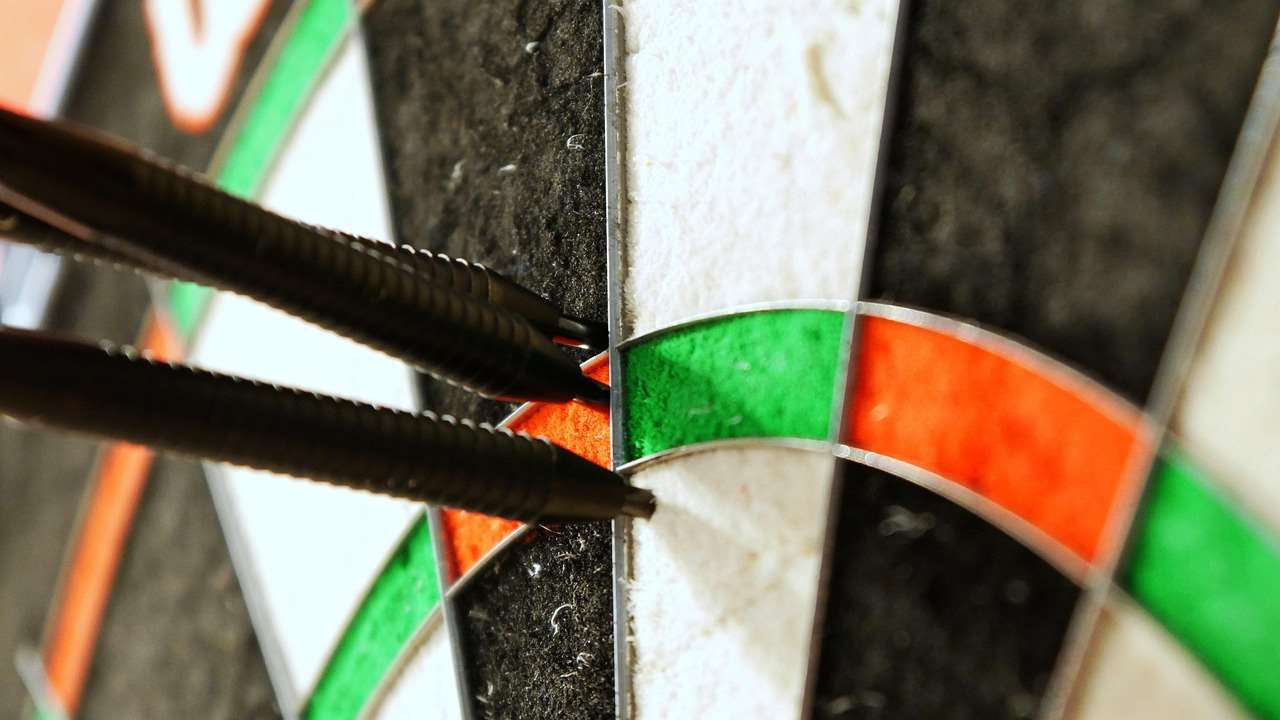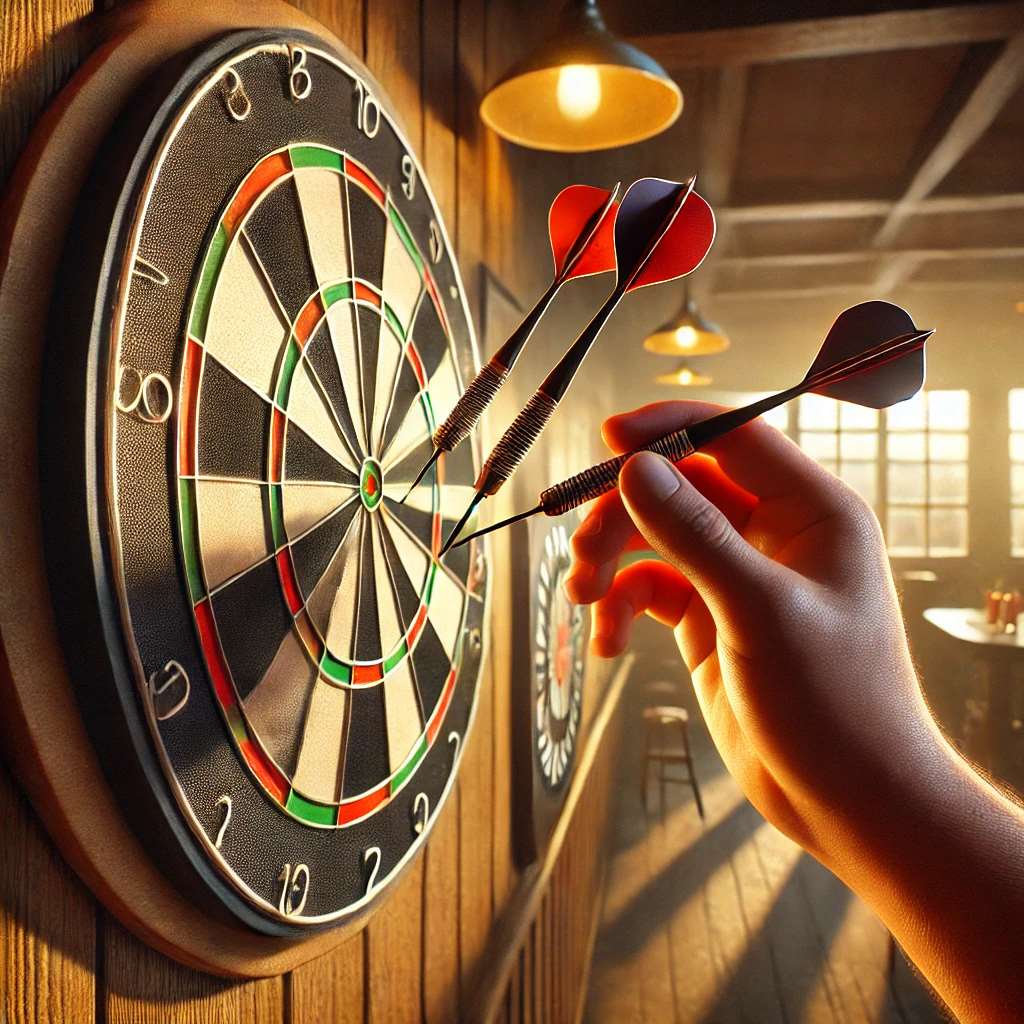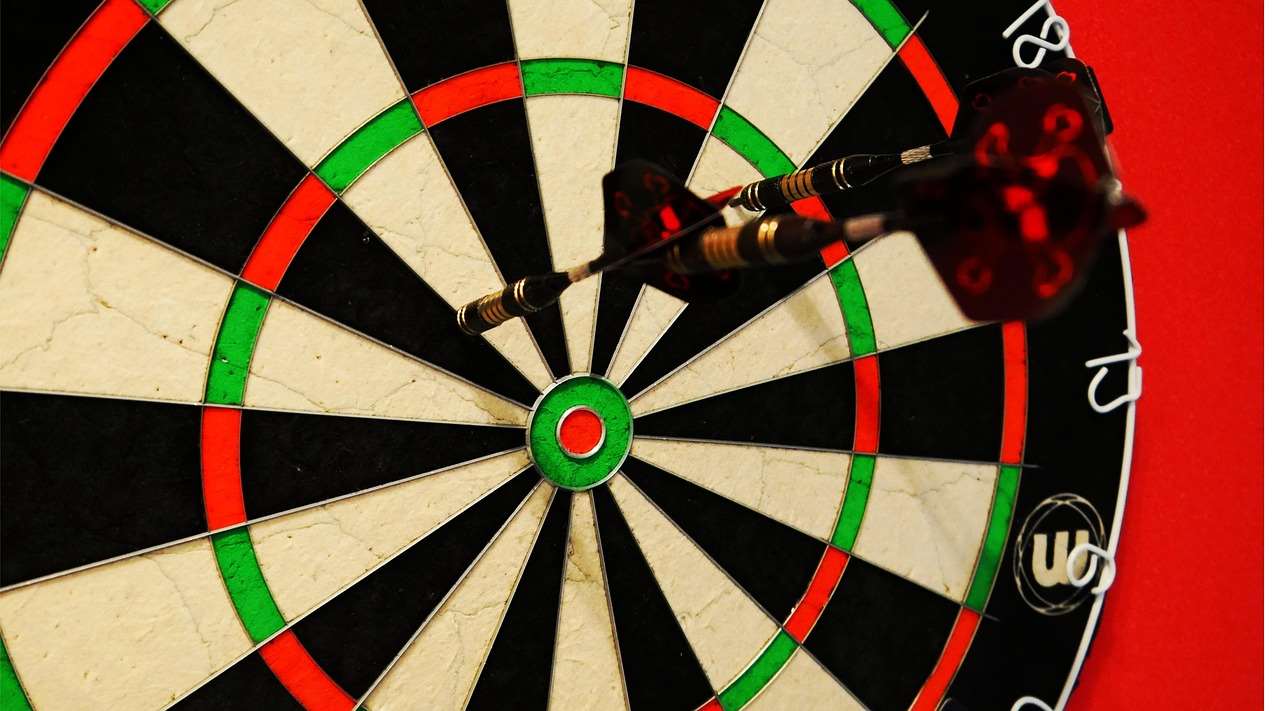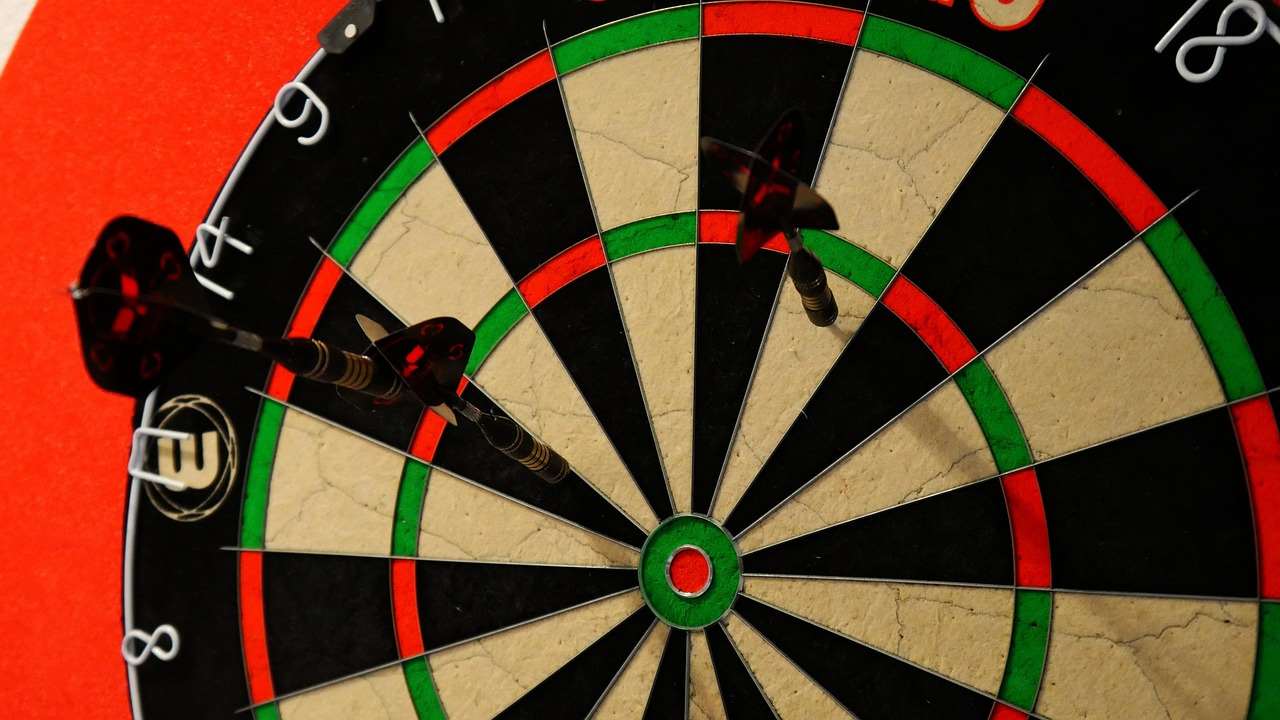The key to a successful and enjoyable darts league lies in clear and well-defined **amateur darts league rules**, which ensure fair play and consistent competition. This article provides a comprehensive guide to establishing and enforcing these essential guidelines, covering everything from game formats and scoring to player conduct and league administration. We’ll explore the core components of a successful **darts league**, focusing on adaptability and fostering a fun and inclusive environment.
⚠️ Still Using Pen & Paper (or a Chalkboard)?! ⚠️
Step into the future! The Dart Counter App handles all the scoring, suggests checkouts, and tracks your stats automatically. It's easier than you think!
Try the Smart Dart Counter App FREE!Ready for an upgrade? Click above!
Understanding the Foundation: Core Amateur Darts League Rules
At its heart, any **amateur darts league** relies on a set of fundamental rules to govern gameplay. These rules address everything from the basic structure of a match to specific regulations regarding scoring and player conduct. Establishing these rules clearly from the outset is crucial for preventing disputes and ensuring a level playing field for all participants. This ensures a more pleasurable playing experience. It’s important that the rules are available to all players.
Standard Game Format: 501 and Beyond
The most common game format in **amateur darts leagues** is undoubtedly 501. In this format, each player starts with 501 points and must reduce their score to exactly zero by scoring points with their darts. The final dart thrown must land on a double or the bullseye to win the leg. However, many leagues also incorporate other game variations to add variety and challenge. These may include:
- 301: A shorter version of 501, offering quicker matches.
- Cricket: A strategic game involving claiming and closing numbers.
- Around the Clock: A simple game perfect for beginners, where players must hit each number in order.
Ultimately, the choice of game formats depends on the preferences of the league members and the desired level of competition. Some leagues even incorporate custom game variations to make matches more interesting.

Scoring and Etiquette: The Finer Details
Accurate scoring is paramount in any darts game. Most leagues utilize a designated scorer, either a player from one of the teams or a neutral party. It’s essential to have a clear system for recording scores and resolving any disputes. Here are a few key points to consider:
- Calling the Score: The scorer should clearly announce the score after each player’s turn, ensuring everyone is aware of the current standings.
- Miscounts: Honest mistakes happen. A system for correcting miscounts fairly is essential.
- Darts Falling Out: Generally, if a dart falls out of the board before being retrieved, it does not count. This rule should be clearly stated.
Beyond scoring, proper etiquette contributes to a positive and respectful atmosphere. This includes avoiding distracting behavior during a player’s throw, respecting the throwing area, and congratulating opponents on good shots. Maintaining a positive attitude is essential, especially for mixed-level dart players.
Ensuring Fair Play: Addressing Common Concerns in Amateur Darts League Rules
Fairness is the cornerstone of any successful **amateur darts league**. This means addressing potential issues proactively and establishing clear rules to resolve conflicts. These rules should cover issues like equipment regulations and player conduct.
Equipment Regulations: Darts, Boards, and Throwing Distances
While **amateur leagues** are typically less strict than professional tournaments, it’s still important to establish some basic equipment regulations. This ensures a level playing field and prevents unfair advantages.
- Dart Weight: While there’s generally no strict weight limit in amateur leagues, it’s common to set a reasonable maximum weight to prevent excessively heavy darts.
- Dart Material: Most leagues allow darts made of various materials, but it’s wise to prohibit modifications that could damage the dartboard.
- Dartboard Standards: The dartboard should be a standard size and made of sisal fiber. It should be hung at the correct height (bullseye at 5 feet 8 inches) and distance from the throwing line (7 feet 9 1/4 inches).
Before play starts, ensure all players adhere to these requirements.
Player Conduct and Disciplinary Actions
Establishing clear guidelines for player conduct is essential for maintaining a positive and respectful environment. This includes addressing issues such as:
- Excessive Alcohol Consumption: A rule limiting or prohibiting alcohol consumption during matches is often necessary to prevent disruptive behavior.
- Verbal Abuse or Harassment: Any form of verbal abuse or harassment should be strictly prohibited, with clear consequences for violations.
- Unsportsmanlike Conduct: Actions such as deliberately distracting opponents or damaging equipment should be addressed with appropriate disciplinary measures.
Disciplinary actions may range from warnings to suspensions, depending on the severity of the infraction. A clear and consistent disciplinary process is crucial for enforcing these rules effectively. Furthermore, when setting up a league that includes novices, adapting darts rules for beginners should be taken into account.

League Structure and Administration: Key to a Successful Darts League
Beyond the rules of the game, a well-organized league structure and effective administration are crucial for long-term success. This includes establishing clear roles and responsibilities, managing finances, and communicating effectively with league members.
Defining Roles and Responsibilities: League Officers and Captains
In most **amateur darts leagues**, specific roles are assigned to different members to ensure smooth operation. Common roles include:
- League President/Commissioner: Responsible for overall league administration, resolving disputes, and enforcing the **amateur darts league rules**.
- Treasurer: Manages league finances, including collecting fees and paying expenses.
- Secretary: Handles communication with league members, maintains records, and schedules matches.
- Team Captains: Responsible for organizing their teams, ensuring players are aware of the rules and schedule, and representing their team in league meetings.
Clearly defining the responsibilities of each role is essential for avoiding confusion and ensuring accountability. Remember that you might have to consider adapting darts rules for small spaces: tips and tricks, depending on the size of your playing area.
Financial Management: Fees, Prizes, and Budgeting
Most **amateur darts leagues** require members to pay a fee to cover expenses such as dartboard maintenance, venue rental, and prizes. It’s crucial to manage these finances responsibly and transparently.
- Fee Structure: Determine a fair and reasonable fee structure that covers all league expenses.
- Budgeting: Create a detailed budget outlining anticipated income and expenses.
- Prize Distribution: Decide how prize money will be distributed among the winning teams or individuals.
- Transparency: Provide regular financial reports to league members to ensure transparency and accountability.
Proper financial management is essential for ensuring the long-term sustainability of the league.
Adapting the Rules: Flexibility in Amateur Darts Leagues
While having a solid foundation of **amateur darts league rules** is important, it’s also crucial to be flexible and adaptable. This allows the league to cater to the specific needs and preferences of its members. This ensures higher satisfaction levels.

Handicap Systems: Leveling the Playing Field
To ensure fair competition among players of varying skill levels, many **amateur darts leagues** utilize handicap systems. These systems adjust players’ scores based on their average performance, giving less skilled players a better chance of winning. Common handicap systems include:
- Average-Based Handicaps: Players are assigned handicaps based on their average score per dart or per leg.
- Points-Based Handicaps: Players receive a certain number of bonus points at the start of each leg.
Carefully consider which handicap system is most appropriate for your league and be prepared to adjust it as needed to maintain fairness. Learn how to make darts fairer with handicap rules to keep everyone happy and engaged.
Modifications for Beginners: Encouraging Participation
If your league includes a significant number of beginners, it may be necessary to modify the rules to make the game more accessible and enjoyable. This could involve:
- Shorter Games: Playing shorter games, such as 301 instead of 501.
- Simplified Scoring: Relaxing the rules regarding double-outs for beginners.
- Practice Time: Allocating dedicated practice time for beginners to improve their skills.
By making the game more approachable for beginners, you can encourage greater participation and foster a more inclusive environment. Leagues should be fun for everyone. Also, if there are children involved, remember to review adapting dart game rules for children.
Communicating the Rules Effectively: Keeping Everyone on the Same Page
No matter how well-defined your **amateur darts league rules** are, they are only effective if everyone understands them. Clear and consistent communication is essential for preventing misunderstandings and ensuring compliance.

Rulebooks and Handouts: Providing Written Documentation
The most effective way to communicate the league rules is to provide written documentation to all members. This could take the form of a rulebook or a simple handout. The documentation should include:
- A complete list of all the rules and regulations.
- Explanations of any complex rules or scoring systems.
- Contact information for league officers.
- A schedule of matches and events.
Make sure that all league members receive a copy of the rulebook and have the opportunity to ask questions about any unclear rules.
Regular Meetings and Announcements: Keeping Members Informed
In addition to providing written documentation, it’s also important to hold regular meetings and make announcements to keep members informed of any changes or updates to the **amateur darts league rules**. These meetings provide an opportunity for members to ask questions, voice concerns, and participate in league decision-making.
Consider the use of email, social media groups or messaging apps to share information quickly and efficiently. The use of technology will help leagues remain modern.
Troubleshooting: Common Issues and Solutions in Amateur Darts Leagues
Even with the best planning and well-defined **amateur darts league rules**, issues will inevitably arise. Being prepared to address these issues promptly and fairly is crucial for maintaining a positive and productive league environment. The best way to do this is to develop a robust solution.

Resolving Disputes: Impartiality and Fairness
Disputes are inevitable in any competitive environment, and **amateur darts leagues** are no exception. It’s important to have a clear process for resolving disputes fairly and impartially. This may involve:
- Designating a neutral party to mediate disputes.
- Establishing a clear appeals process.
- Adhering strictly to the league rules and regulations.
Remember, the goal is to find a resolution that is fair to all parties involved and maintains the integrity of the league.
Handling Rule Violations: Consistency and Transparency
When rule violations occur, it’s important to address them consistently and transparently. This means applying the same disciplinary measures to all members who violate the rules, regardless of their skill level or popularity. A transparent disciplinary process helps to build trust and ensures that all members are treated fairly.
By addressing issues promptly and fairly, you can maintain a positive and productive league environment and ensure that all members feel valued and respected.
Conclusion
Establishing clear, well-defined **amateur darts league rules** is paramount for creating a fair, fun, and sustainable environment. This involves considering various factors, including game formats, scoring procedures, equipment regulations, player conduct, league structure, and communication strategies. By being proactive, adaptable, and committed to fairness, you can build a thriving darts league that all members will enjoy. So, take these guidelines, adapt them to your specific needs, and get ready to throw some darts! Now is the perfect time to establish your very own rules and get your darts league up and running. Good luck!
Hi, I’m Dieter, and I created Dartcounter (Dartcounterapp.com). My motivation wasn’t being a darts expert – quite the opposite! When I first started playing, I loved the game but found keeping accurate scores and tracking stats difficult and distracting.
I figured I couldn’t be the only one struggling with this. So, I decided to build a solution: an easy-to-use application that everyone, no matter their experience level, could use to manage scoring effortlessly.
My goal for Dartcounter was simple: let the app handle the numbers – the scoring, the averages, the stats, even checkout suggestions – so players could focus purely on their throw and enjoying the game. It began as a way to solve my own beginner’s problem, and I’m thrilled it has grown into a helpful tool for the wider darts community.